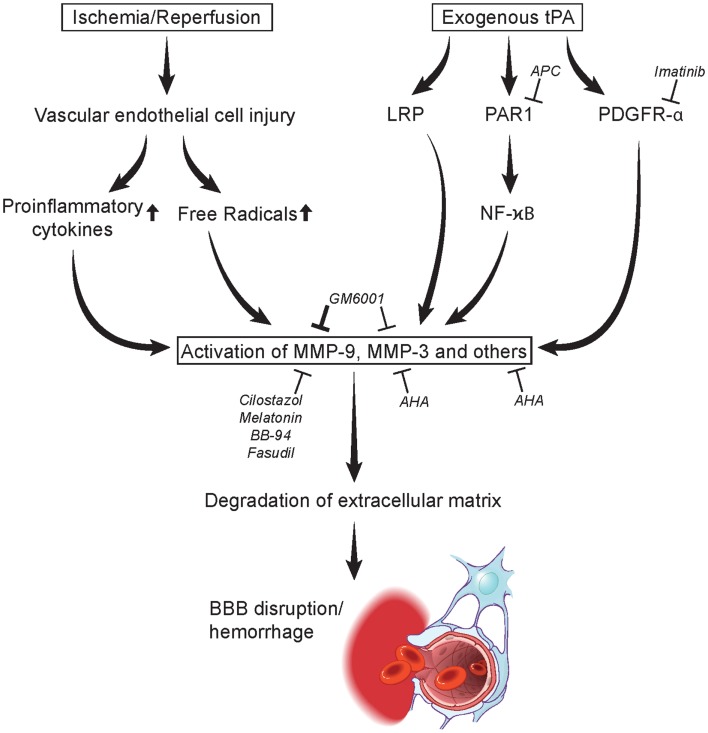Figure 1.
Mechanisms in MMP activation leading to degradation of extracellular matrix and blood-brain barrier disruption/hemorrhage. Acute stroke may lead to vascular endothelial cell injury causing the release of proinflammatory cytokines and free radicals at the neurovascular unit activating MMPs. tPA administration may likewise induce MMPs through the LRP, PAR1, and PDGRF-α pathways. MMP activation is inhibited by several agents including imatinib, activation protein C (APC), cilostazol, melatonin, BB-94, GM6001, fasudil, AHA, NYX-059, and edaravone (Table 2). LRP, lipoprotein receptor-related protein; MMP, matrix metalloproteinase; PAR1, protease-activated receptor 1; tPA, tissue type plasminogen activator. Figure modified from Yamashita and Abe (2011).

